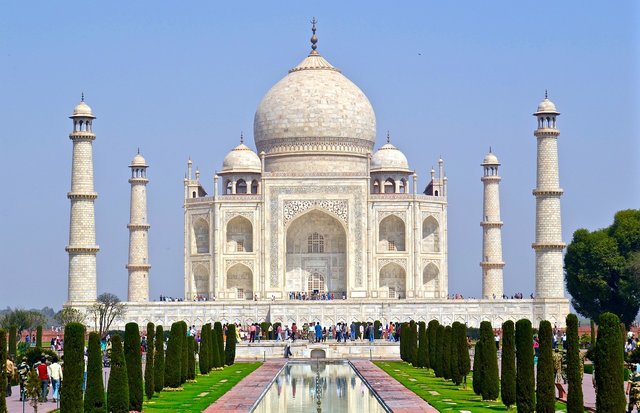The Magnificent Taj Mahal: A Timeless Symbol of Love and Architecture
The Taj Mahal, a stunning white marble mausoleum located in Agra, India, is not just an architectural marvel but also a testament to enduring love. This timeless masterpiece was built by the Mughal Emperor Shah Jahan in memory of his beloved wife Mumtaz Mahal, and it has captured the hearts of people worldwide for centuries.
Construction of the Taj Mahal began in 1632 and took over 20 years to complete, with thousands of skilled artisans and laborers contributing to its creation. The monument's exquisite design blends elements of Persian, Islamic, and Indian architecture, resulting in a harmonious fusion of artistic styles. Its breathtaking central dome, delicate minarets, and intricate marble inlays showcase the meticulous craftsmanship of the era.
Legend has it that Shah Jahan was so enamored with Mumtaz Mahal that, upon her death in 1631, he was devastated and resolved to build a monument that would reflect their deep love. The Taj Mahal's construction served as a profound expression of his grief and devotion, standing as an enduring symbol of eternal love.
The Taj Mahal's historical significance extends beyond its romantic origins. It also represents the zenith of Mughal architecture and culture during the 17th century, showcasing the empire's grandeur and artistic achievements. The monument's gardens, with their geometric layout and serene reflecting pool, provide a tranquil space for contemplation and appreciation of its beauty.
Throughout its history, the Taj Mahal has faced challenges, including environmental factors and preservation efforts. Yet, it continues to stand as an iconic landmark, drawing millions of visitors from around the world each year.
In 1983, the UNESCO designated the Taj Mahal as a World Heritage Site, recognizing its exceptional cultural and historical importance. Today, it remains an enduring symbol of love, architectural brilliance, and the rich history of India.
The Taj Mahal's legacy serves as a poignant reminder of the power of human emotion and creativity, transcending time and culture to inspire awe and admiration. As visitors gaze upon its gleaming marble facade and explore its intricate details, they are transported back in time to a world of love, art, and architectural mastery, making the Taj Mahal an eternal treasure cherishe

d by humanity.